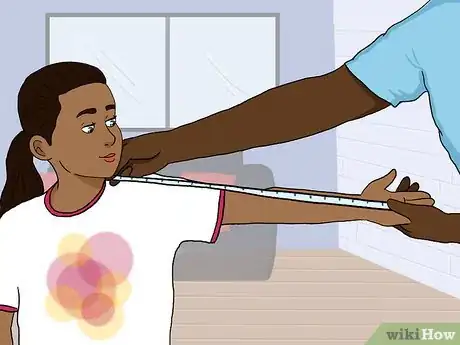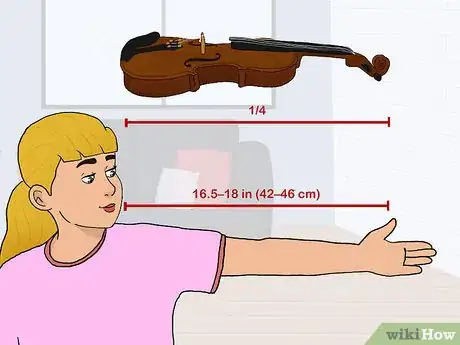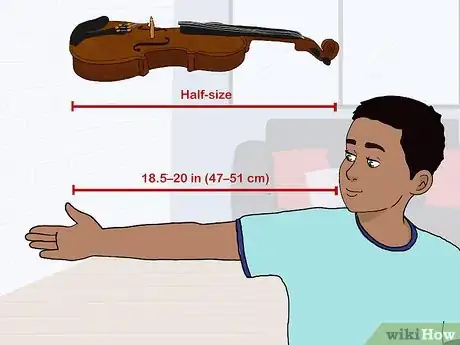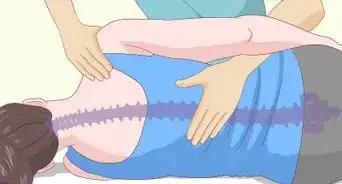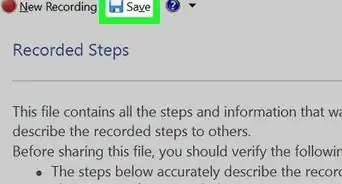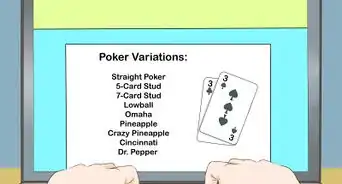This article was co-authored by Dalia Miguel. Dalia Miguel is a violinist and violin instructor based in the San Francisco Bay Area. She is studying Music Education and Violin Performance at San Jose State University and has been playing violin for over 15 years. Dalia teaches students of all ages and performs with a variety of symphonies and orchestras in the Bay Area.
There are 9 references cited in this article, which can be found at the bottom of the page.
This article has been viewed 26,761 times.
When learning to play the violin, it is crucial to select the right size.[1] In total, there are 7 different violin sizes, ranging from 1/16, 1/10, 1/8, 1/4, 1/2, 3/4 and 4/4. You can size a violin for a child by measuring their arm length and selecting the corresponding violin size. Have your child hold the violin and grasp the scroll to check the sizing. If they can comfortably wrap their fingers around the scroll, the violin is sized correctly.
Steps
Measuring Your Child's Arm
-
1Have your child hold their arm straight to the side, parallel to the floor. It is best to measure violin size when the player’s arm is straight. To do this, ask your child to extend their dominant hand outward.[2]
- Make sure they hold their arm as straight as possible. If their arm is bent at the elbow, the measurement may not be completely accurate.
-
2Start your measurement at the center of your child’s hand. Ask your child to extend their fingers and flatten their hand. Then, hold the beginning of a measuring tape at the middle of their hand.[3]
- The middle of the hand is approximately where the base of the thumb meets the hand.
- If you don’t have a measuring tape, you can use a yardstick instead.
Advertisement -
3Bring the measuring tape to your child’s neck to find their arm length. Hold the measuring tape at your child’s hand, and stretch the tape until you reach their neck. Make your measurement where their neck meets their shoulder.[4]
- This area covers the region where the violin is held, which provides an accurate measurement.
- Be careful with the measuring tape so you don’t injure your child by accident. The edges can be sharp!
Choosing the Right Violin
-
1Try a 1/10 or 1/16 violin if their arm length is less than 16 in (41 cm). Use a 1/10 violin size if your child’s arm length is between 15–16 in (38–41 cm). Opt for a 1/16 violin size if your child’s arm length is only 14–15 in (36–38 cm). If your child is 4 years old or younger, these are good size options.[5]
- While these sizes are not as common, they are available for aspiring young violinists.
-
2Go with a 1/8 violin size if your child’s arm length is 16 in (41 cm). Most commonly, young children start to learn the violin with this size. This is a great option for children ages 4-6 years old or in kindergarten.[6]
-
3Try a 1/4 violin size if your child’s arm length is 16.5–18 in (42–46 cm). On average, children ages 5-7 years old use this violin size. This is the typical size for 1st grade violin players.[7]
- The body of a 1/4 size violin is typically about 16.5–18 in (42–46 cm). This measurement does not include the neck and scroll.
-
4Go with a half-size violin if their arm length is 18.5–20 in (47–51 cm). The half-size violin is the midpoint on the violin size spectrum. This size is recommended for most 7-9 year old children and 2nd to 3rd graders.[8]
- The average size of the half-size violin body is about 19–20 in (48–51 cm).
-
5Select a 3/4 violin size for an arm length of 20.5–22 in (52–56 cm). If your child’s arm length is too big for a half-size violin, try a 3/4 size. On average, this size works great for 9-12 year old children. It is common among 5th to 6th grade orchestra students as well.[9]
- Some adults may prefer to use a 3/4 size violin.
-
6Choose a full-size violin if their arm length is 23 in (58 cm) or greater. If the measurement you get is over 23 in (58 cm), your child should use a full-size violin. Full-size violins commonly fit children 12 years or older. They are typically used in grades 7 and up.[10]
- This is the largest violin option, and it is used by adult violinists as well.
Testing the Violin
-
1Have your child hold the violin in the playing position. Ask the student to extend their arm outwards and grip the end of the violin. Then, have them hold the violin between their chin and their shoulder.[11]
- This way, you can easily size the violin based on how it fits in their hand.
-
2Ask your child to wrap their hand around the scroll of the violin. Your child should drape their fingers around the scroll, which is the decorative, carved end of the violin. If your child can comfortably touch the peg box (where the tuning pegs are), the violin is a good fit.[12]
- The scroll of the violin usually has a rolled-up, spiral shape.
-
3Choose a smaller size if the scroll is hard for your child to reach. If your child cannot wrap their fingers around the scroll comfortably, the violin is the wrong size. Their fingers should easily reach the peg box without any strain or discomfort.[13]
- If your child plays with a violin that is too large, it may be hard for them to balance the weight. This may result in improper posture and playing technique.
-
4Try a larger violin size if your child’s fingers go past the scroll. If your child’s fingers extend onto the peg box, try giving them a larger violin size to hold. Their fingers should just reach the end of the scroll.[14]
- If your child uses a violin that is too small, they may develop bad playing position. Poor positioning can negatively influence the tuning of the instrument.
Expert Q&A
-
QuestionWhat should I keep in mind when purchasing my child's first violin?
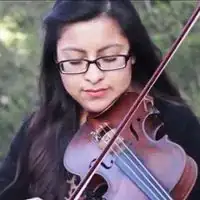 Dalia MiguelDalia Miguel is a violinist and violin instructor based in the San Francisco Bay Area. She is studying Music Education and Violin Performance at San Jose State University and has been playing violin for over 15 years. Dalia teaches students of all ages and performs with a variety of symphonies and orchestras in the Bay Area.
Dalia MiguelDalia Miguel is a violinist and violin instructor based in the San Francisco Bay Area. She is studying Music Education and Violin Performance at San Jose State University and has been playing violin for over 15 years. Dalia teaches students of all ages and performs with a variety of symphonies and orchestras in the Bay Area.
Experienced Violin Instructor I always tell parents to consider their child's age. I usually recommend that parents not buy violins for their child, because the child is going to keep growing. I usually recommend renting one until they reach their first size.
I always tell parents to consider their child's age. I usually recommend that parents not buy violins for their child, because the child is going to keep growing. I usually recommend renting one until they reach their first size.
Warnings
- Instead of purchasing a larger violin with the intention of your child growing into it, choose a smaller size. It is better to round down rather than rounding up when it comes to sizing violins for children.⧼thumbs_response⧽
- If your child uses a violin that is too big or too small, they may not learn how to play correctly and may get discouraged.⧼thumbs_response⧽
References
- ↑ Dalia Miguel. Experienced Violin Instructor. Expert Interview. 27 August 2018.
- ↑ https://youtu.be/zLjHrna5r30?t=23s
- ↑ https://youtu.be/zLjHrna5r30?t=36s
- ↑ https://youtu.be/zLjHrna5r30?t=51s
- ↑ https://www.mencheymusic.com/wp-content/uploads/2013/01/2015_violin_sizing_chart.pdf
- ↑ https://www.mencheymusic.com/wp-content/uploads/2013/01/2015_violin_sizing_chart.pdf
- ↑ https://www.youtube.com/watch?v=zLjHrna5r30
- ↑ https://www.youtube.com/watch?v=zLjHrna5r30
- ↑ https://www.youtube.com/watch?v=zLjHrna5r30
- ↑ https://www.youtube.com/watch?v=zLjHrna5r30
- ↑ https://youtu.be/_aqBIJjVcHE?t=25s
- ↑ https://youtu.be/_aqBIJjVcHE?t=30s
- ↑ https://www.youtube.com/watch?v=_aqBIJjVcHE
- ↑ https://www.youtube.com/watch?v=_aqBIJjVcHE
- ↑ Dalia Miguel. Experienced Violin Instructor. Expert Interview. 27 August 2018.



